Deborah Herridge peeks behind the lace curtain of Victorian society to reveal an age of darkly fascinating science…
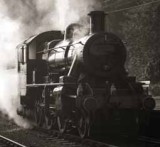 We may have spent much of the 19th century pushing children up chimneys and covering the modesty of piano legs, but it was also a time of huge scientific and technological advances; a time when science came out of the closet and into the steam age. In fact, it was a Victorian, William Whewell, who first invented the word ‘scientist’ in 1840. And while we may not be able to recreate steam locomotion in the typical primary classroom, there are plenty of other Victorian investigations to be had, by Jove!
We may have spent much of the 19th century pushing children up chimneys and covering the modesty of piano legs, but it was also a time of huge scientific and technological advances; a time when science came out of the closet and into the steam age. In fact, it was a Victorian, William Whewell, who first invented the word ‘scientist’ in 1840. And while we may not be able to recreate steam locomotion in the typical primary classroom, there are plenty of other Victorian investigations to be had, by Jove!
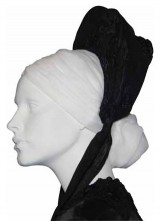 The great stink
The great stink
As the population grew and more and more people moved into the cities, the Victorians discovered they had a bit of a problem with their drains. In London, 1858, the smell of raw sewage became so unbearable that parliament gave Joseph Bazalgette £3 million to build a network of sewers that still keeps the capital (relatively) stink-free today. It was then too that Thomas Crapper - arguably the most famous plumber in history - made his fortune inventing and installing flushing water closets.
Keeping a clean, plentiful and unpolluted water supply is still a problem today, so let’s imagine we are Victorian engineers faced with a river polluted by sewage. How can we get it clean?
First, make your sewage…
Stay with me on this one! Find a large sweet jar and half fill it with clean water. Next, muddy the water with some garden compost. (Not soil as we want to keep this as sterile as possible.) After that you’ll need some things that float – Maltesers have always worked well for me. Then find some things that sink to add to your mix, such as rice or ball bearings, and give it all a good mix. Lovely. Why do some things float and others sink? Can the children investigate?
Clean it up
The first challenge for the children is to separate the solids from the liquids. Using sieves this is fairly straightforward, but if you want to increase the level of difficulty then ask the children to remove the individual solids and separate them into groups. Depending on what you have included you might use different grades of sieve, magnets, picking large objects out by hand or scooping floating objects from the water’s surface. You might separate by sedimentation; leaving substances like sand or gravel to sink to the bottom and then pouring off the liquid above through a filter.
You can make a filter by cutting the bottom off a two litre pop bottle, stopping the mouth end with cotton wool and layering fine sand, then coarse sand and finally gravel to about 10cm below the large opening you have created. Pour your sewage mix through this filter and collect the clean water in a cup underneath.
Can we drink it?
No we can’t! Compare your filtered water with the sewage mix you had before. Although the water may look clean now, ask the children why we shouldn’t risk drinking it. What might be in the water that we can’t see? There may be dissolved substances that our filters haven’t removed or there could be bacteria that would cause us harm.
It was the same for the Victorians. In 1854, there was a virulent outbreak of cholera around Broad Street, Soho. It was common thinking at the time that cholera was an airborne disease but local Doctor, John Snow, determined that it was carried in water. More specifically, in this instance, from a polluted water supply that he traced to a pump in Broad Street.
Pass it on
We can dramatically demonstrate how germs can spread from person to person by using ‘Glitter Bug Gel or Potion’ (available from most educational suppliers); a harmless hand cream that while undetectable on the skin glows purple under UV light.
Liberally ‘infect’ one person with the gel and encourage them to shake hands with a friend, then another. Now get those friends to shake hands with someone else and so on. Invisibly they will be passing tiny amounts of the gel from hand to hand. Now scan everyone’s hands with UV light. There should be signs of fluorescence throughout the class, illustrating exactly how disease can spread. Remember, germs are microscopic and it only takes one to cause an infection. Reassure the children that they don’t actually have germs on their hands, only glowing hand lotion!
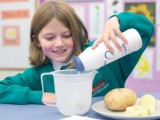 Coffin ships and load lines
Coffin ships and load lines
As Victoria’s empire grew, more and more goods were shipped around the world. However, not every vessel reached its destination and many ships were wrecked due to overloading and treacherous seas. So many were lost, in fact, they were often referred to as coffin ships.
If you look at a cargo ship today you’ll see lines drawn on the hull. These are known as Plimsoll lines after the MP who pioneered their use. As a ship is loaded it sinks down in the water, but the depth to which it sinks changes with the saltiness and temperature of the water in different parts of the world.
To demonstrate this, float a margarine tub in heavily salted water and then fill it with marbles until it’s only just able to keep afloat. Now put the same tub in clear, unsalted water – it’s less buoyant and sinks. We can investigate this in the classroom.
Floating potatoes
Dice a raw potato into 1cm cubes. Arrange several measuring cylinders in a row, each half full of room temperature tap water. Do we think the potato cube will float or sink? Drop a chunk into the first cylinder and record where the bottom of the cube sits in the water.
To your second cylinder of water add around three teaspoons of table salt and stir until dissolved – what happens to the potato now? To the next cylinder add six teaspoons of salt – what happens now? Continue until your final cylinder contains a fully saturated salt solution. Do you get a different result if the water is warm, or really cold? Where in the world would ships encounter very warm or very cold water? Would this make a difference to how much cargo they could carry?
As an extension activity, ask children to make a hydrometer using a 6cm length of lastic drinking straw with a blob of plasticine sealing off one end. Use a marker pen to gauge the straw at 5mm intervals. With a bit of practice it will float upright in any iquid and you can read off your scale. Try liquids at different temperatures, bottled versus tap water, milk or cola.
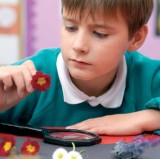 Plant detectives
Plant detectives
2009 is the 200th anniversary of the great Victorian naturalist Charles Darwin’s birth. To celebrate, Kew and the Wellcome Trust gave every primary school a box of treasures to encourage children to explore the world of plants more closely. All of the antastic printed resources are also available at greatplanthunt.org
The Victorians were great plant collectors and classifiers of plants; they grew them, saved the seeds, pressed them and mounted hem in catalogues. They even developed a ‘language of flowers’ so they could send secret messages to each other.
Children can follow in their footsteps by gathering examples of plants from their school grounds, using published keys to identify them (or creating their own) classifying them into groups and mounting their specimens for display. A really useful quick guide to playing field plants is available from the Field Studies Council at field-studies-council.org.
For a longer project, present children with a range of ‘mystery Victorian seeds’ and challenge them to grow these until the resulting plant is big enough to identify. Nasturtiums, borage, radish, cucumber, sunflower and nigella are all pretty easy to cultivate and were all known to the Victorians.
Harvest, dry and press your plants between absorbent papers, weigh down with books and when fully dry, mount into your Victorian botany book and label in your best copperplate handwriting.
Sit up straight at the back there!
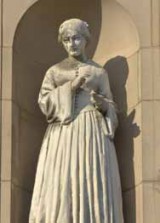 Follow in the footsteps of florence nightingale…
Follow in the footsteps of florence nightingale…
The story of Snow’s detective work at the Broad Street pump is a great example of how Victorian medicine was emerging from the quackery of former times into a more scientific age. Other great Victorians who made enduring contributions to medical science include William Moreton and Oliver Wendell Holmes who pioneered anaesthetics; Joseph Lister who first realised that carbolic was an antiseptic, which could be used to clean wounds; and, of course, Florence Nightingale who knew the benefits of soap and cleaned up the hospital at Scutari in the Crimea, changing the status of nursing forever.
Nightingale was a great collector of statistics and one of the first people to use pie charts to communicate scientific information. Challenge your children to communicate their own survey information in the style of Florence Nightingale.
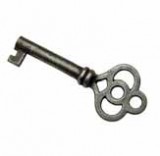 Five less famous victorians for children to investigate…
Five less famous victorians for children to investigate…
Luke Howard
Have you ever gazed up at the sky and imagined shapes in the clouds? It was Victorian chemist and meteorologist Luke Howard who first named the different types of clouds in Latin – cumulus, stratus, cirrus and so on.
Sir Richard Owen
He was the scientist who founded the Natural History Museum in South Kensington, London and named the dinosaurs using the Greek ‘deinos’, meaning terrible, and ‘sauros’, meaning lizard. He also taught biology to Queen Victoria’s children.
Alexander Parkes
A chemist and inventor of a brand new material ‘Parkesine’ which was the very first plastic. Unfortunately it wasn’t very successful as it tended to burst into flames!
Henry Bessemer
Inventor of the Bessemer converter who, in 1856, found a way of producing high quality steel cheaply. His invention revolutionised engineering and allowed for all sorts of steel implements in the home – like knives and forks.
William Friese-greene
‘The inventor of Kinematography’. A portrait photographer who ‘developed’ from making magic lanterns to motion picture cameras using celluloid film. There’d be no blockbuster movies without him.
